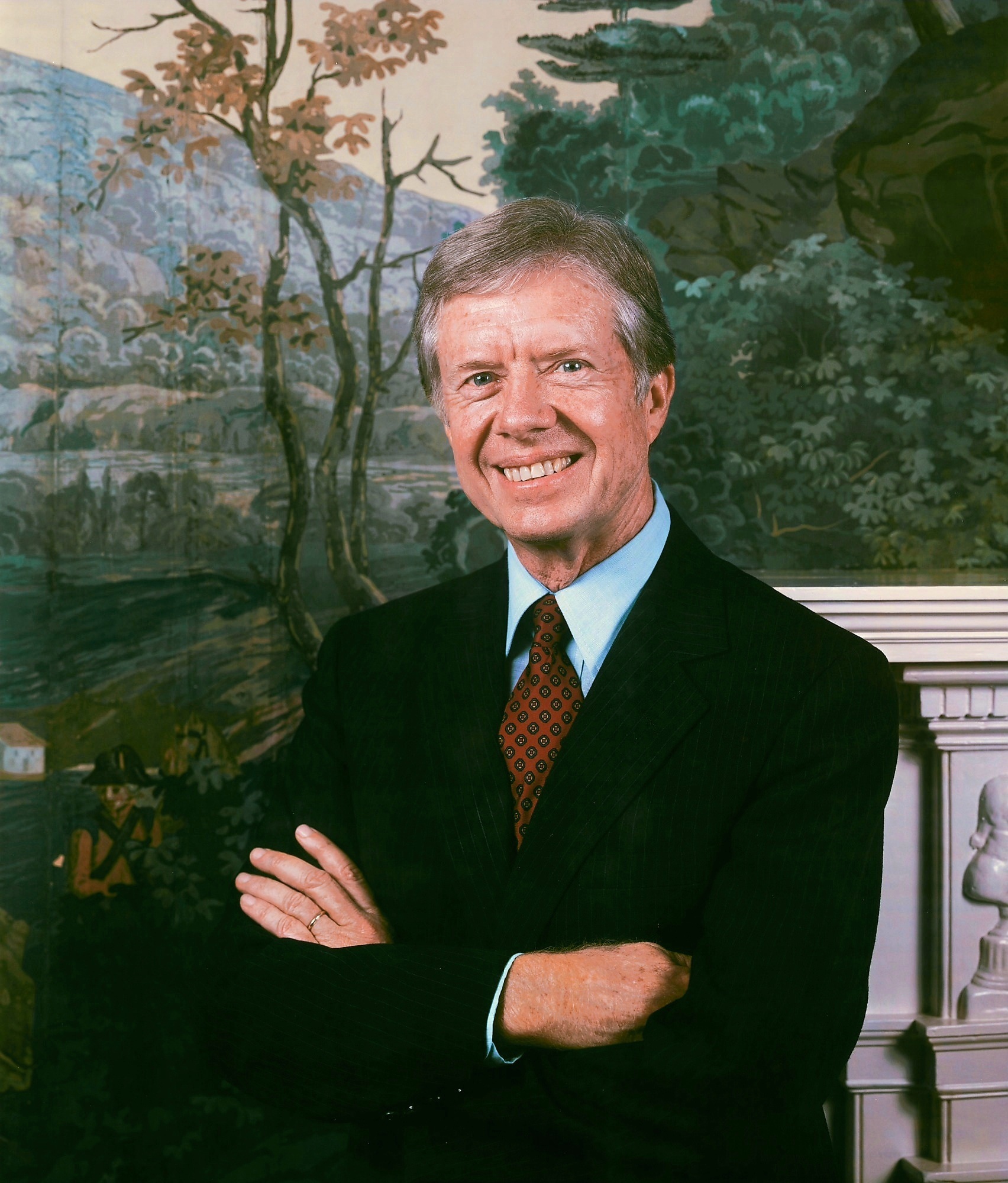Remembering Jimmy Carter as he Begins Hospice Care
On Sunday, Feb. 19, The Carter Center announced that Jimmy Carter, the thirty-ninth president of the United States, the founder of the Carter Center, and a deserved recipient of the Nobel Peace Prize, has forgone medical treatment and entered hospice care. At 98 years old, Carter’s life is likely coming to an end, and many colleagues and friends of Carter are reflecting on the profound legacy he will leave behind. One such colleague is the former Senior Director of The Americas Program for the Carter Center and current St. Lawrence University Professor Dr. Shelley McConnel. From 1997 to 2007, McConnel traveled and worked alongside President Carter to foster democracy and human rights in Latin America, the Caribbean, and beyond.
James Earl Carter Jr. was born to a farmer and a nurse in Plains, Georgia. He excelled in engineering at The United States Naval Academy, received a master’s degree in Nuclear Physics at Union College in Schenectady, New York, and became a lieutenant onboard the second nuclear submarine ever built. However, when his father died in 1953, he left his post and returned to Georgia where he got involved in local politics. The rest is history. The presidential legacy of Carter is one of peace and sustainable energy before they were trendy talking points, yet those who really followed Carter’s life know that the bulk of his impact was felt decades after the end of his presidency.
When asked about her colleague’s life after losing re-election to Ronald Reagan, Dr. McConnel said that Carter “transformed the role of the U.S. post-presidency” because he leveraged his publicity as a former president to keep working on his political goals. With the foundation of The Carter Center in 1982, Carter began traveling around the world to monitor the fairness of elections, fight diseases, and act as a peaceful mediator between opposing parties.
What makes Carter stand out from other U.S. Presidents is not only his post-presidential work, but also his strategy for foreign relations. When working with countries in Latin America, Africa, and Eastern Europe, he would respect the sovereignty of those countries. He was not wielding the blunt force of America’s power with blind impunity, but rather working alongside leaders, grassroots organizers, and citizens to build healthcare centers, share knowledge, and encourage fair elections between the opposition. With the Carter Center, Carter traveled to 39 countries, monitoring a total of 113 elections, and led the coalition that eliminated guinea worm disease by 99.99 percent. It is the only disease since smallpox to be eradicated, and Carter accomplished this by “taking seriously the medical capacity of these countries to work with their own citizens.”
During the Reagan era, Carter received criticism for being weak and a socialist, but in reality, he was just ahead of his time. Because Carter respected other nations and went to great lengths to avoid war, he was labelled as weak. Because Carter pardoned Vietnam draft dodgers, he was labelled as weak. Because Carter emphasized climate health and sustainability over rapid economic gain, he was labelled a socialist. Today, however, we know that Carter successfully bargained a truce between Israel and Egypt with the Camp David Accords. We also know that hindsight has provided us with more clarity on the disaster that was the Vietnam war, and imprisoning Americans who refused to fight was probably a good call. And climate change? It is safe to say he was right about that too. For more information on Jimmy Carter and the misconceptions about him, check out PBS NewsHour’s “Why Jimmy Carter may be the Most Misunderstood President in American History.”
When interviewing Dr. McConnel on her time spent working alongside Carter, it was clear she deeply admired the man. She recounted stories of watching Fidel Castro and Jimmy Carter crack jokes on a pitcher’s mound in Cuba before throwing a ceremonial pitch. Carter later had Castro sign that baseball with him before selling it at an auction to raise money or mental health awareness. McConnel shared stories of driving diplomats to Carter’s humble farmhouse in Plains, Georgia, where the diplomats would insist they were in the wrong place because they could not picture a former U.S. President living in such a modest house.
When McConnel would point out the Secret Service agents mulling around the farm, the diplomats would concede and walk in the door.
Jimmy Carter and his wife, Rosalynn Carter, have used their post-presidential fame to support the Habitat for Humanity, and they have volunteered for hundreds of hours over a 35-year span. As an 88-year-old, Carter volunteered a week of his time working full days to help build affordable housing in Oakland, California. At 95, Carter was photographed smiling while holding a nail gun and boasting a serious black eye from a fall just days prior. Unlike so much of today’s political posturing and publicity stunts, Carter was actually a skilled builder and carpenter. It is estimated that throughout his life, he funded or directly built 4,331 homes for those in need. In the words of Dr. McConnel, Carter was “a human being before a bureaucracy,” who led by example in his personal and professional life.



